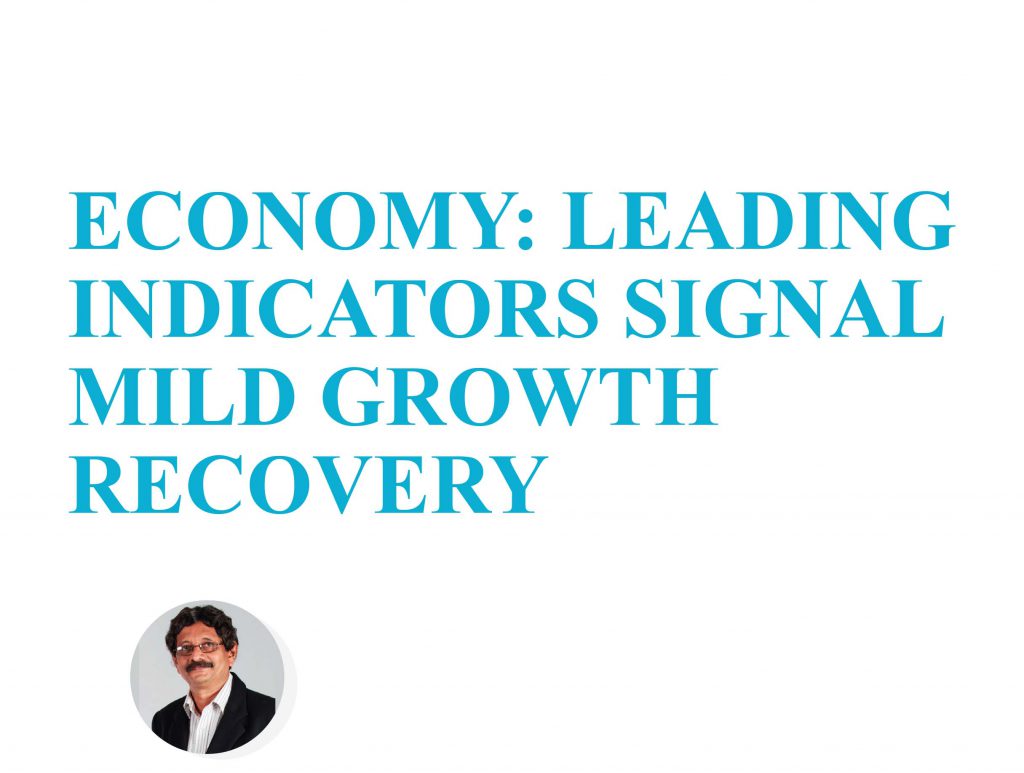Stock markets discount the future. If the earnings being discounted by the market fail to materialize, there can be sell-offs leading to sharp market corrections. Sometimes, the market gets it wrong. There is a major concern in the market presently: Is the market over optimistic about growth and earnings recovery?
The slump in growth
The first quarter FY 2018 GDP growth rate which came in at 5.7% was a shocker. It was expected that there would be a minor recovery in the growth rate after the demonetization-induced slump of the last quarter of FY 2017. The dip in manufacturing growth to a mere 1.2% brought the growth rate crashing down. Going by the present trends, the actual growth rate for FY 2018 would fall far short of the RBI’s projection of 7.3% and is likely to be somewhere near the lower band of Chief Economic Advisor’s growth projection of 6.75% to 7.5%. In the short-term, achieving the fiscal deficit target of 3.2% of GDP would be challenging. Job generation, tax revenue buoyancy and public expenditure programs depend on revival of growth. So the relevant questions are: Why is growth slowing down? When will growth revive?
The boom years
Let us look at the issue from a longer time horizon. During 2003-11, India’s GDP grew by a record 8.4%. The Great Recession of 2008 didn’t impact India much. The Indian economy staged a ‘V’ shaped recovery after the minor dip in 2008-09. It is important to note that the benign global economic environment of 2003-07 facilitated fast growth in all Emerging Markets. The record global growth of 4.5% during this period was a rising tide lifting all boats. Sustained export growth of above 20% annually aided India’s high GDP growth rate during those boom times.
The downturn
The Great Recession of 2008, the European debt crisis of 2010 and 2011, the ‘Taper Tantrums’ of 2013, the commodity crash of 2014 and Brexit impacted the global economy severely and pulled down the growth of Emerging Markets too. International trade slumped impacting exports. India too was impacted. India’s growth rate for the 7-year period 2011-17 is only 6.65%. Is this sub 7 % growth rate a new normal for India?
The sharp revival of growth in India during 2009-11 was aided by unprecedented fiscal and monetary stimulus. The savage cut in interest rate by the RBI and the massive fiscal stimulus including farm loan write-offs, which aided the ‘V’ shaped recovery, led to high level of inflation, which threatened to get entrenched. This forced the RBI to tighten the monetary policy; and the government was forced to cut down on public expenditure to achieve fiscal consolidation. Monetary tightening and fiscal consolidation impacted growth. The economy started slowing down and deficiency of demand constrained private capex. With capacity utilization in manufacturing at around 70%, private investment dried up. The second half of FY 2017 was impacted by demonetization.
The slump in the first quarter 2017-18 growth was mainly caused by the dip in manufacturing growth to 1.2%. This was largely due to the destocking impact triggered by GST. Destocking by traders led to poor orders for manufacturers, which, in turn, impacted manufacturing. This can be expected to reverse in the second quarter. An unknown factor is the impact of demonetization and GST on the unorganized sector. If the impact turns out to be worse than expected, growth recovery will take more time.
Disconnect with global growth
The present downturn in the Indian economy has come at a time when global growth is recovering. If global growth continues to improve and the domestic growth continues to falter, that would be a serious concern. Normally, improving global growth provides the tailwind for higher domestic growth through recovery in exports. Present indications are that the growth slump is a temporary blip caused by the impact of demonetization and GST related disruptions. Perhaps, this tepid growth may linger for one more quarter after which recovery will be sharp. Already, there are signals indicating recovery.
Leading indicators signaling recovery
Some leading indicators suggest that growth is recovering. For instance, automobile sale, which is regarded as a significant leading indicator, is picking up strongly. Automobile sale in August is an all-time high. Passenger vehicles, commercial vehicles and two wheelers have posted impressive double-digit growth. Another major positive indicator is the turn around in exports, which have recovered to 10.29% in August from 3.94% in July. If this trend in auto sales and exports sustains in the coming months, that would augur well for recovery in GDP growth in the second half of FY 2018. Hopefully, GST related disruptions too would be behind us soon. Of late, capacity utilization in manufacturing has improved from 71% to 74%, which is a positive signal. It appears that even though the target of 7.3% growth for FY 2018 would be missed, economic recovery is on the cards. Earnings recovery might begin with Q3 or Q4 of FY 2018 with a sharp recovery in FY 2019.
By Dr. V. K. Vijayakumar
